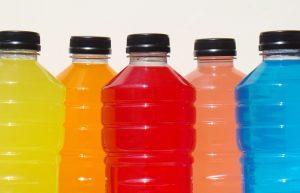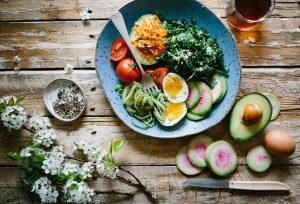Less-than-accurate fitness advice may be negatively affecting your health!
Men. You often get skipped when it comes to popular fitness and wellness trends. But that does not mean that you are not subjected to a few absurd fitness myths. In fact, a lot of the advice you consider “facts” are more than likely doing you more harm than good.
One source says carbs are ruining your diet. Another says to stay away from meat. What about your friend who swears crunches are the only way to get six-pack abs? Being pulled in this many directions, finding good, healthy lifestyle advice can be more exhausting than a five-mile run.
Luckily, we’ve parsed through the tangled mess of fitness facts and misinformation, so you don’t have to. If you’re considering a new medical weight loss plan, make sure you’re well-informed before you start!
Myth #1- Crunches are a One-Way Ticket to Six-Pack Abs
Not so much! Despite what you’ve heard, six-pack abs take a bit more than a few daily crunches. For real results, try interval training, appropriate carb intake, quality sleep, and managing your stress. From an effort standpoint, the crunches sound easier. Instead of crunches, which do very little to burn belly fat, try squats, deadlifts, chin-ups, planks, and bridges. You want to focus on your entire core, not just the one section, for defined abs.
Myth #2- Sip a Sports Drink After Every Workout

Save sports drinks for gym sessions or hour-long cardio workouts. If you struggle with the flavor or lack thereof, that water has, sports drinks can be a decent way to ween yourself on to the idea of staying hydrated. Even if sports drinks are not ideal, drinking something is better than nothing.
Myth #3 If You aren’t Sweating, You Aren’t Working
Sweat’s primary purpose is to keep you cool. You are going to sweat a lot more on a track during the summer than you will on the treadmill in your air-conditioned gym. Furthermore, calorie-burning activities, like walking or light weight training are not particularly sweat inducing. Sweat is definitely not an indicator of burned calories, either.
Burning fat does not always need to be the goal, though. Certain workouts, while not huge fat burners play into other weight-loss essentials. Take hot yoga for example. You may not burn as many calories as you would in an aerobics class or intense weight lifting session. But you will reduce stress, improve flexibility, and increase strength. Over time, these will improve your endurance for those high-intensity workouts.
Myth #4 Health Foods are More Expensive

This one is a bit of a half-myth. It’s easy to get sticker shock at health food stores– when you’re looking strictly at pre-packaged foods and organics. Beans, grains, lean meats and produce are generally affordable options. Meal planning and prepping also save time and money by allowing you to buy in bulk. By paying a little bit more up front, you will likely save long-term on health care costs, as a byproduct of switching to a cleaner diet.
Get to know your local bulk food stores, farmers markets, and co-ops, then supplement with the specialty products from the chain health food stores. (P.S. Local supermarkets are beginning to carry a lot of the specialty products, often at a lower price point. Do your research!)
Myth #5 No Pain, No Gain
This may be the most dangerous myth on the list. But before you quit the treadmill for good, make sure you are distinguishing pain from discomfort. It is normal to feel a bit of burn, maybe a little ache when winding down. But shooting, stabbing, or throbbing pain? That is a red flag. Some soreness AFTER a workout is normal, but tear-jerking agony? Not so much.
But the bottom line is, workouts should not hurt. If you experience pain: stop, rest, and then continue. If the pain continues, stop your workout and visit a doctor. You are very likely suffering from an injury.
Myth #6 Do Cardio First

Unless you have a workout routine that already works for you, do not do cardio first, especially if you are trying to lose weight Orlando. Cardio takes a lot of energy, often leaving you winded and rather sweaty. (Meaning your body is working harder on keeping you cool than anything else!) Instead, start off with some resistance training, such as lifting weights. This sort of exercise will increase the amounts of testosterone and cortisol in your body, energizing your entire workout.
Myth #7 It takes at least 45 minutes to Burn Fat
This myth takes on a few different variations. Some say it takes 30 minutes before your body burns fat. Others say it takes at least an hour. Your body can benefit from any physical activity, even if it is just 15 minutes. Do what it takes to get your heart rate to increase.
Aim for around 150-250 minutes of vigorous exercise per week. If you fall short, keep going. It will not be long before 45 minutes of intense training will seem like, well, a piece of cake.
Myth #8 Protein = Muscle

Rather than increasing your protein intake, consider redistributing it to breakfast time! We tend to consume our biggest sum of protein at dinner, after all of the day’s activities have passed. For better results, try some protein in the AM.
Myth #9 Fat Makes You Fat
Second only to the myth of the zero carb diet, no to low-fat diet have remained in the minds of the average person for far too long. Good fats, like those found in nuts, avocados, and fish, paired with an appropriate level of carbs actually promote weight loss! Dietary fat also shuts down your body’s hunger and craving sensations- so while yes, the caloric count may be higher, you will eat less in one sitting. Limit trans fats and saturated fats. You won’t get the same benefits from fried chicken and candy bars.
Myth #10 Salt is bad for you
After a few studies connected high blood pressure to sodium intake, we were quickly advised to cut salt out of our diets as much as possible. More recent studies suggest that it isn’t the salt itself causing problems, but rather a poor diet after all. Most of our sodium intake comes from processed foods, not from table salt.
Further, researchers are finding that too little salt can also be bad for the heart. In patients without preexisting cardiovascular issues, consuming less than three grams of salt lead to a 26% increased risk of a heart attack or stroke. The takeaway? Limit your junk food, but do not be afraid to add a sprinkle of salt to your avocado toast in the morning.
It can be tough figuring out how to take care of your body, especially when fitness myths are so rampant. At the end of the day, it boils down to a balanced diet and appropriate levels of physical activity. If you think you are ready to take the next step in your weight loss Orlando journey, contact Physicians Weight Loss. Let your weight loss dreams become weight loss goals.

